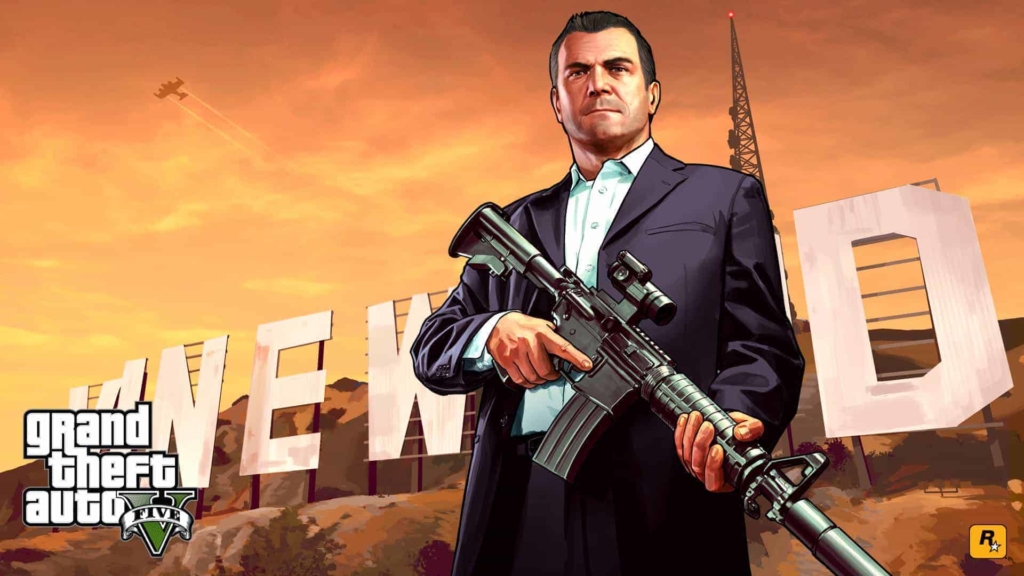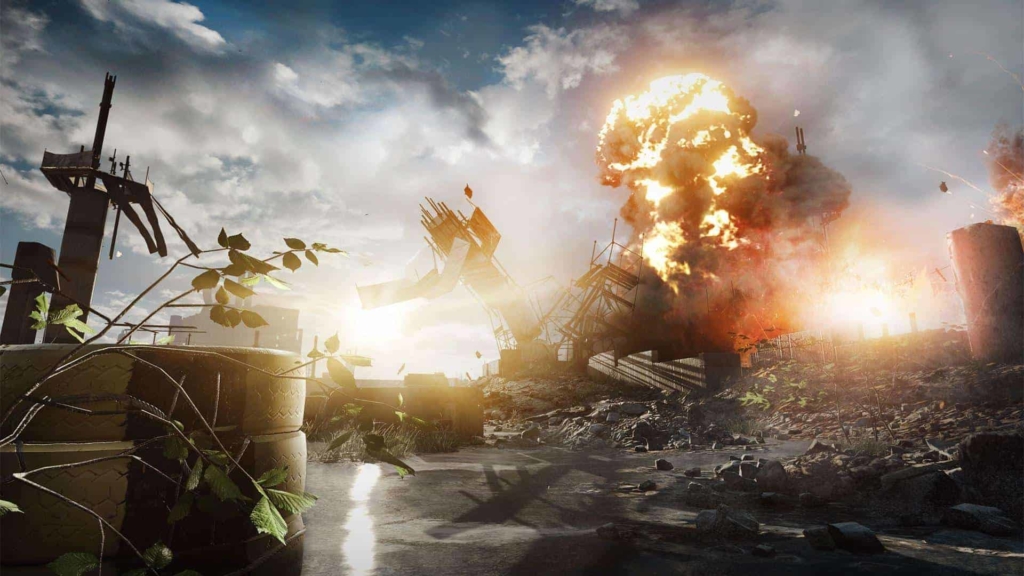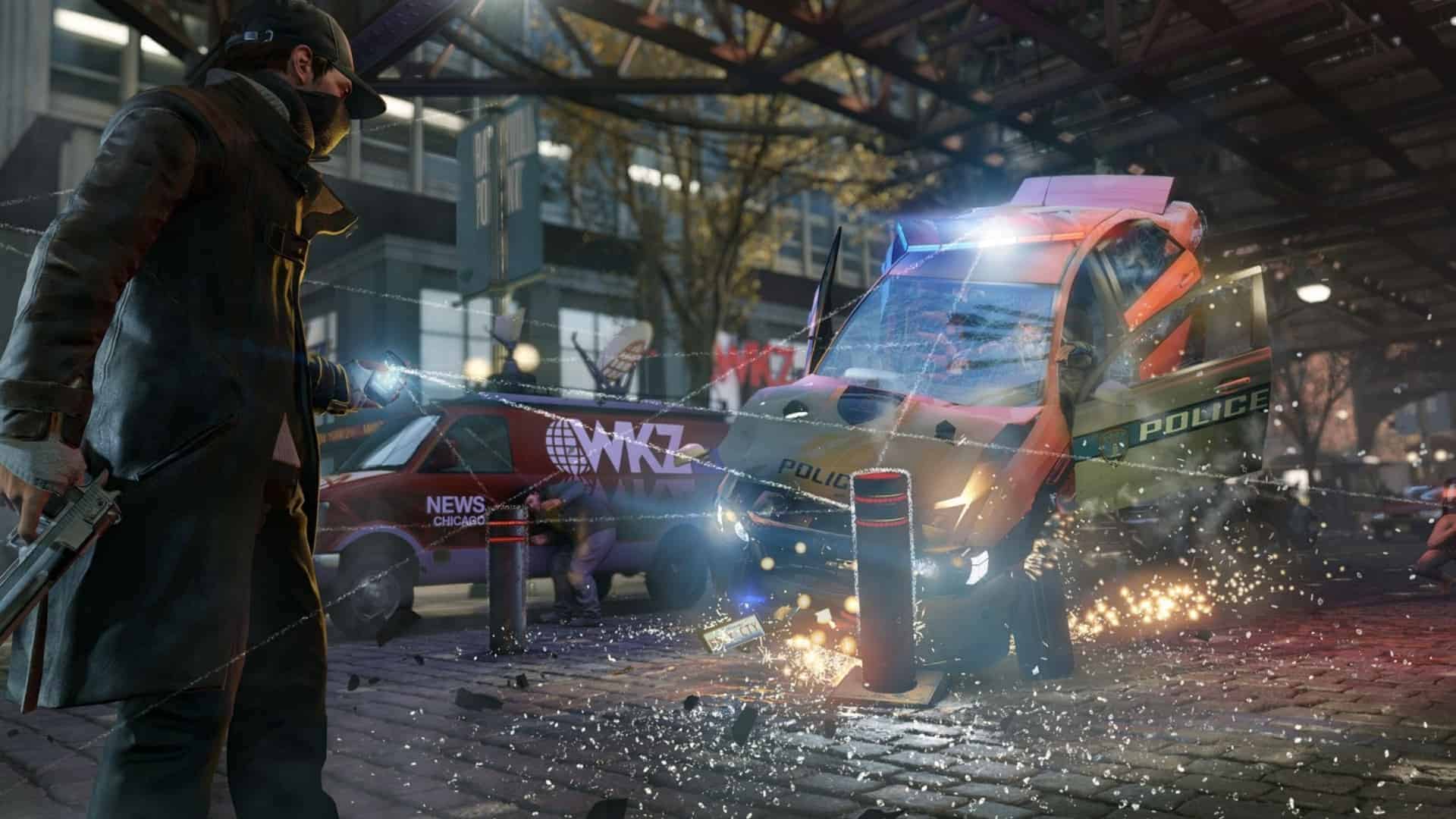Violence in Video Games Venerated: Game Gore Glorified
People always seem to get caught up with beginnings. When did the slippery slope start; what was the one tangible event when everything changed? Whether its socio-political commentary, or declines in education, there are always those who point to moments in history where they say the rot set in. Usually they are woefully wrong because, in reality, what they see as a sudden change is actually a progression and the slippery slope is somewhat longer and gentler than you may think.

History of Video Game Violence
The history of violence in gaming is almost as old as computer games themselves. Pong, the Granddaddy of all computer games, first hit the arcades in 1972 but was soon followed by more imaginative – and gory – titles. 1976 witnessed the release of Deathrace, a console game inspired by the 1975 film, “Deathrace2000”, which saw drivers purposely targeting pedestrians to score points. The game took its major plot device from the film but sweetened it slightly by calling the stick beings ‘gremlins’ and introduced a competitive element by replacing the flattened bodies with tombstones which had to be avoided; GTA V it wasn’t in programming, but all the intent was there.
While gaming flourished over the next few years, and moved from the arcades to the bedrooms of spotty youths, the games remained very low brow and usually depicted alien invasions or sports, until the release of Custer’s Revenge as a cartridge game for the Atari system. The game, a very low resolution affair based on the popular legend of “General George Custer”, depicted – badly – the rape and murder of native Indian women, and was one of an increasing number of titles made for the Atari by American purveyor of filth, Mystique. The so called Adult Video Game industry bloomed along with the advent of home computers and while most of its content was concerned with rendering blocky pictures that looked rude if you squinted, as many people happened to be doing while viewing them, it also crossed over into the growing games industry throwing up such charming titles as “Beat ‘em Up, Eat ‘em Up”, and “Batchelor Party” as well as Custer’s Revenge. The games were sold under the Swedish Erotica banner, even though they were programmed in America and mass-produced in Hong Kong, rather than lovingly crafted in Scandinavia. Luckily the Internet arrived and treated the world to real pornography, effectively killing the genre before it could assault our tortured eyes any further.
The road onwards is littered with notable titles that pushed the envelope further. From Wolfenstein 3D through to Duke Nukem, video violence seemed to take leaps forward every few years, prompting the popular press to decry them with much wailing and gnashing of teeth. They loved to read too much into the titles hitting the stores and took each one as evidence of the increasing debauchery that mankind was spiralling down into. Then, in 1996, they really got something to short stroke over. Grand Theft Auto – usually abbreviated to GTA – was the brainchild of DMA Design, and hit a new niche in the market and grew from a car racing game called Race ‘n Chase to become something more action based. In this game the PS1 or PC player was encouraged to break the law during the many quests central to the story. Playing as a lowly member of a city crime syndicate, the player completed assigned tasks to earn points and climb the criminal ladder, earning money and respect while doing so. Stealing vehicles (Grand Theft, Auto in American legal vernacular) and offing pedestrians just helped to increase the characters notoriety and was encouraged. Had this been a rubbish game, no one would have really noticed and it would have died an embarrassing death on the cheap shelves, but it was both fun to play and engaging and so, much to the horror of Daily Express readers, it became a milestone in gaming history. Its success amongst the gaming clan was sealed from the first release, and all further editions have sold in increasing amounts with the latest outing – GTA V – scooping a massive $800 million in sales on its first day! While much of the interest in it has come from its huge open world playable area, but undoubtedly many are drawn by its unbridled violence and the sheer fun of stealing cars and creating mayhem on the beautifully crafted streets of a sunny city. So is this just another step in the apparent relentless march along the road to anarchy? Do playing violent games make people want to emulate that violence in the real world?
Academic Study for Links
So what do the academics say? Can psychologists draw tangible conclusions that demonstrate a link between what we play and what we do? The simple answer is no as, while there have been marked incidents such as Columbine, computer games have only truly existed for the last thirty years and there simply isn’t enough empirical data to show a definite trend. Televisions have been readily available since the 1960’s and the debate as to whether people emulate what they see on there is still raging, so there is little hope of proving any link between games and violent behaviour for some time. More intriguing are the results of experiments on the close-sectioning of animals and how overcrowding affects rats psychologically.

Allied to this is the notion that people simply believe what they see on a TV screen, whether it comes from games or mainstream programming, and may emulate it. Lots of people are adamant that that an overall deity exists despite there not being a single shred of proof to back it up. Others like to believe that Elvis works in the local chip shop, or plesiosaurs (Nessy for those non-palaeontologists among us!) swim freely in Scotland; given over six billion people on the planet, it is possible to find someone who will say or think anything you can imagine, however outrageous, because we are all individuals and we all have our own views. So is there any credibility in the notion that people may blindly follow actions onscreen into the real world? There has not been a single recorded case where someone has died or killed themselves in some game-inspired way thinking that they would simply respawn again as their favourite character does in whatever game is their opium. Surely, if people were that believing in the realism of computer gaming, at least some people would have had to have tried it; it’s statistically unlikely for it not to be the case.
Are Games more Violent?
So it appears that it’s not so much a case that videos games have got any more violent, rather the increase in graphics has made what we see all the more appalling? Imagine Call of Duty: Ghosts but in 8-bit; the intent to show violent death and serious injury is there, but the sheer weakness of the graphics doesn’t allow it to become realistic. Stepping up to 64-bit and the huge amounts of dedicated graphics applied to both consoles and PCs and suddenly we have the full horror of photo-realistic maiming and death. Our imagination has to work less because it is all spread before us on the screen in glorious techni-colour. Doom 95 is often cited as being a prince amongst violent and blood splattered games, but an hour’s play before bedtime is unlikely to have you in screaming nightmare land of shotgun executed demons since what is portrayed as a violent death, is actually a brief burst of red pixels as the shotgun kicks; hardly scenes from the abattoir, is it?
The media makes much of video-game violence and attempts to draw comparisons between what people play out on screen with real-life incidents. This was no more obvious than in the rage that followed the Columbine shootings in 1999 when Dylan Klebold and Erik Harris went on a rampage through their school, killing thirteen of the twenty people they shot at. In the aftermath of the shooting, when it became apparent that the two youths had spent much of their time playing computer games such as Doom, Mortal Kombat and Wolfenstein, the media was quick to try to draw parallels between playing these games and excessively violent behaviour. The finger was pointed and many took the apparent route from cause to effect as done and dusted; it was obvious that violent computer games would lead adolescents to emulate violent behaviour wasn’t it? The media assault following Columbine was so swift, forceful and complete that it encouraged the widow of one of the victims to raise a lawsuit against both console manufacturers and game publishers. The lawsuit was ultimately dismissed with presiding Judge Babcock finding that video game developers and publishers couldn’t realistically be held responsible for the unforeseen actions of others. So sanity won, but little details like that don’t stop the powerful media machine from taking it as evidence of mass mental-corruption of our children.
So computer games may appear more violent than their predecessors but actually aren’t, though a bigger question comes from does all this increased gaming violence make for more violent players? Does the ability to shoot people in the throat and watch them bleed out translate into the will to do the same down the pub on a Saturday night? In reality our senses have been bombarded with the results of war for the last forty years, and it’s unrealistic to say that everyday violence has got significantly worse; it simply gets reported more and becomes available on multiple platforms. If you carry out a web-search for iconic war images, you are more likely to find pictures of napalmed-children and burned out villages from Vietnam rather than horrific vistas of death from Helmand Province. That is not because war is any less brutal or receives less reporting, but more to do with modern war being comprised of precision strikes from drone aircraft and informed troops rather than bloody hand-to-hand fighting amongst the rubble of broken buildings from previous wars. Precision strikes have also led to a reduction in the kinds of civilian casualties that were a signature of Vietnam. The wars of today are no less devastating than those of forty years ago, but they are simply played out in a much smaller theatre and one that doesn’t require the carpet bombing of a whole nation in an attempt to simply rid it of a small percentage of the population. We have been treated to images of violence for almost as long as TV has existed, but we have not become noticeably more aggressive.
What it all Means

So what makes Mortal Kombat so different from the current batch of shoot-‘em-up’s? Its depiction of violence can be encapsulated as simply gratuitous and unnecessary rather than an act completed to further a story. Simply killing people isn’t enough for Mortal Kombat – it has to go the extra mile and create unnecessarily violent deaths, which, when coupled with the standards in graphics available today, becomes something more than fun.
Back in 1976 the National Safety Council called Deathrace “sick and morbid”; can you imagine what they would have made of Mortal Kombat 2011?

